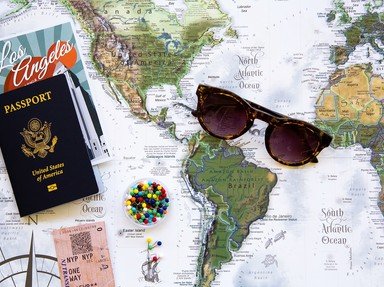Quiz Answer Key and Fun Facts
1. During the twentieth century, only one Belgian author has won the Nobel Prize for Literature. In 1911, Maurice Maeterlinck won this prestigious prize. Which of these is one of his works?
2. Who was the famous Greek author, who died in 1957, that penned a "Report to Greco" and whose epitaph reads, "I hope for nothing. I fear nothing. I am free"?
You really don't have to roll down a hill to get it!
3. It is well known that "Decameron" was written by Italian writer and poet Boccaccio. Do you happen to know what was his first name?
4. In 1955, Halldór Laxness became the first writer from Iceland to win the Nobel Prize for Literature. One of his first novels is "Under the Holy Mountain", published in 1924, in which Laxness reflects on spiritual experiences of his early life. Where was Laxness while writing this book?
5. Dutch novelist Harry Mulisch wrote a convoluted story - basically - about God plotting to take back his tablets with the Ten Commandments, since mankind failed to follow them anyway. What is the title of this book?
6. What was the name of the Athenian comedy writer who rose high in the clouds, was attacked by wasps who then fell prey to birds, and splashed in a pond disturbing the frogs?
7. Which of these Russian women wrote the tale "Fevey", which served as a libretto for an opera that premiered in 1786? She is better known for another occupation.
8. "Bonjour, Tristesse" is a story about a widower (Raymond) and his 17 year old daughter (Cécile). Both had their love affairs, but things turned out tragically. Who was the author?
9. Which controversial Spanish author and Nobel Prize winner, considered to be one of the founding fathers of Spanish modern literature, was revealed to have been a spy for Generalísimo Franco?
10. Can you name the English author who wrote about "The White Queen", "The Red Queen" and "The Kingmaker's Daughters"?
Source: Author
JanIQ
This quiz was reviewed by FunTrivia editor
looney_tunes before going online.
Any errors found in FunTrivia content are routinely corrected through our feedback system.
